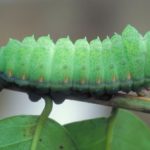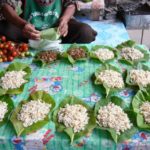In Thailand, two types of freshwater snails are commonly consumed. The first group is comprised of the larger Apple snails (Pomacea canaliculata), while the other group is referred to as Freshwater snails (Sinotaia sp. & Filopaludina sp.). These genera can be found in abundant quantities throughout the region, wherever fresh water is available year-round.
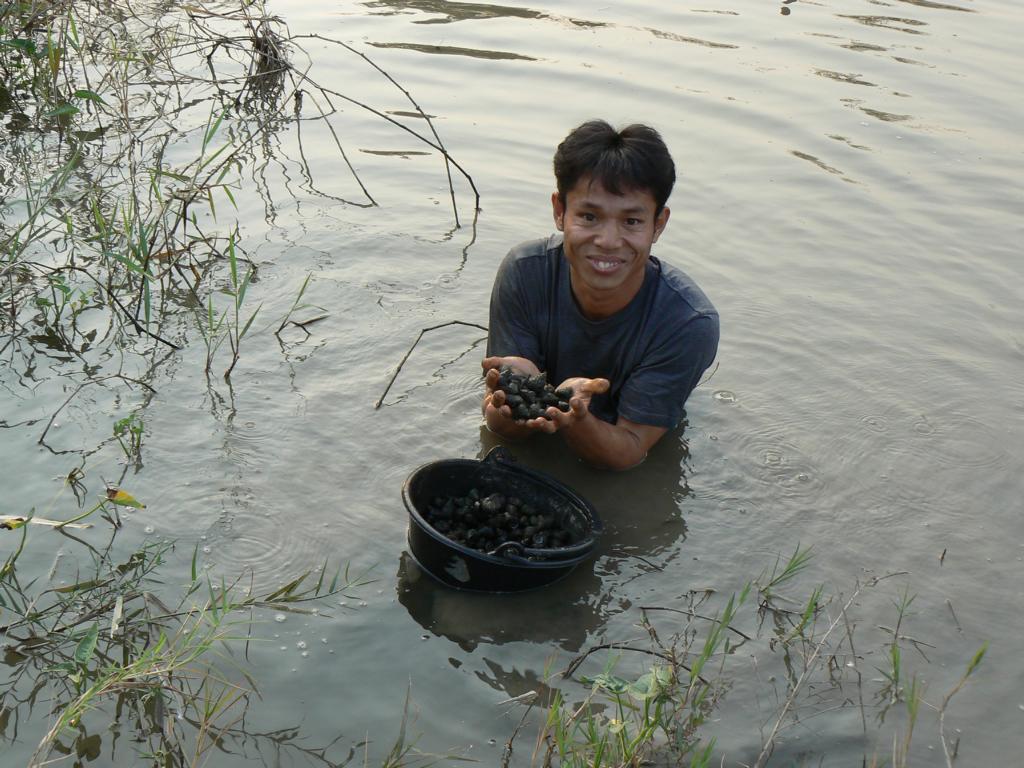
General information about Apple snails
The apple snail, also known as the Golden apple snail, is commonly harvested in Thailand. They can be found in abundant quantities throughout the region, wherever freshwater is available year-round. The peak season for collecting and eating apple snails in Thailand is generally from July to October, during the rainy season when the snails are most abundant.

Originally from South America, apple snails were first bred for food in snail farms in Taiwan. However, their rapid spread to other countries such as Japan, Vietnam, Thailand, Indonesia, and Malaysia has resulted in a pest problem. They can devastate rice fields at an alarming rate, faster than they can be harvested for food. They are either sprayed with insecticides or fought biologically by releasing ducks or breeding carp fish in heavy infestations. Manual harvesting is recommended by authorities only if the snail population on a paddy field is small.
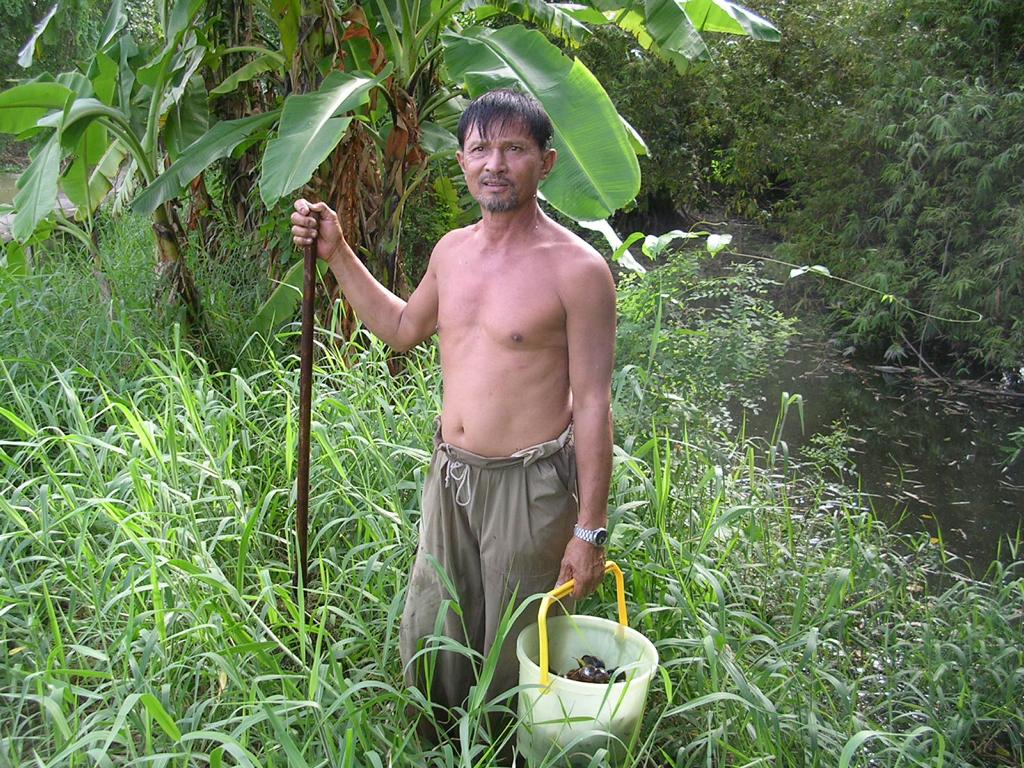
Apple snails and their conspicuous eggs
A female snail reaches maturity and begins laying eggs at two weeks. Without natural predators, a female can lay up to one million eggs annually. The snail’s pink eggs are obvious, typically appearing as a pink patch on wooden stems and structures above the water surface. Laying her eggs above the water’s surface protects them from fish predation.
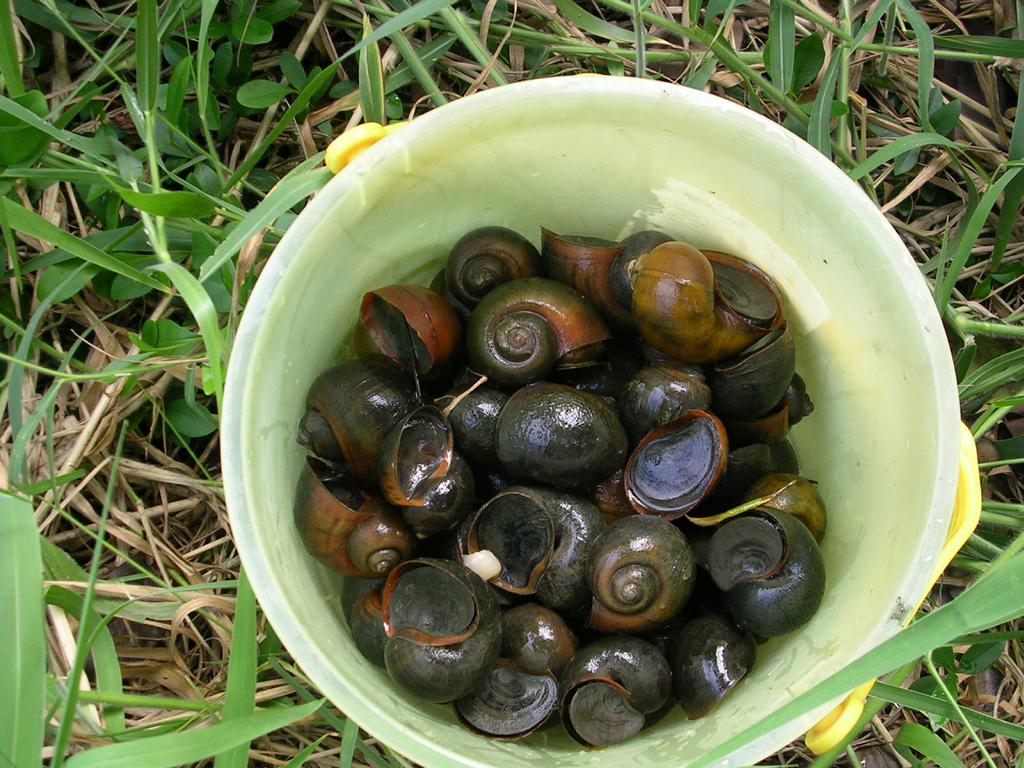
Apple snails have a tubular siphon for breathing air while submerged, which reduces their vulnerability to attacking birds. Both adaptations have helped these snails to survive and propagate. When paddy fields dry out, these snails can hide in the earth for up to eight weeks before making their way back up when the fields are irrigated.
Snails as carriers of parasites
Water snails are a typical and regular diet for many rural people. These have adapted to and eliminated harmful parasites in their staple food. However, water snails, swamp eels (Pla Laat, Ophisternon bengalense), mollusks, and fish can contain trematodes, parasitic flatworms commonly known as flukes. Boiling these water snails for about 8 minutes will render the trematodes harmless.

On a related note, vegetables collected from water bodies in the region should not be consumed raw. They must be put into boiling water for a few seconds before consumption. This will kill any flukes floating around searching for a host for new development stages.
Lessons learned about freshwater snails for food:
- Apple- and other freshwater snails are a staple food for a large population in upcountry Thailand.
- The primary harvest time for these snails is from July to October, which falls during the rainy season.
- Apple snails are becoming a pest in rice fields due to their ability to lay up to 1 million eggs annually and their effective predator avoidance strategies.
- Boiling all snails thoroughly before consumption is necessary to ensure food safety.
.


